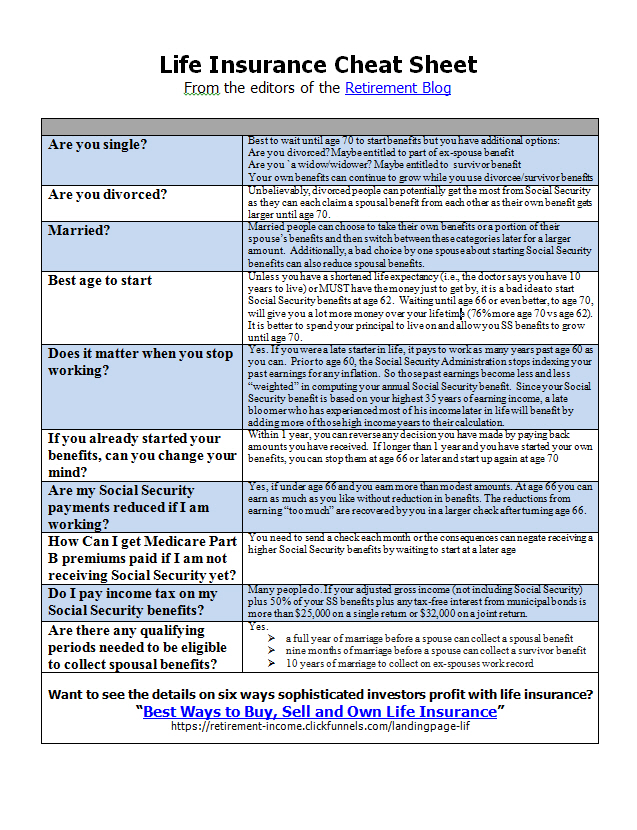Most retirees have two main senior health care options - Medicare and managed care. A third option, Medicaid, is a program that pays for medical assistance only for those with low incomes or disabilities and will not be discussed in this post.
As long as you've contributed enough through FICA taxes, you'll be eligible - retired or not - for Medicare when you turn 65. So as to be eligible as soon as you turn age 65, apply for Medicare coverage three months before your 65th birthday.
Medicare, the most important senior health care option, is divided into components:
- Part A- hospital insurance
- Part B - medical insurance (Optional)
- Part C- additional insurance coverage
- Part D - offers voluntary prescription drug coverage offered via private vendors
Part A is for hospital insurance. It covers most costs of your stay in the hospital as well as some follow-up costs after being in the hospital. It also pays some outpatient medical services, including medically necessary equipment and supplies (such as oxygen or a wheelchair), home health care, and physical therapy. Under most circumstances, you don't have to pay a premium for Part A.
Part B is medical insurance. It's optional and you do pay for, in most cases, it as a deduction from your social security check. It provides for certain out-of-hospital treatments and is intended to help pay doctor's visits for treatment in or out of the hospital. It also covers many other medical expenses you incur when you're not in the hospital, such as the costs of necessary medical equipment and tests.
Medicare Part B has spawned additional insurance coverages.
- Its Original Medicare Plan plus Medigap insurance (Medigap is insurance you buy for the 20% of expenses that Medicare Part B does not cover)
- Medicare Part C coverage: Medicare Managed Care Plan (like an HMO), and Medicare Private Fee-for-Service Plan
With the Original Medicare Plan, you pay your Part B monthly premium and then pay for additional services as you use them. With this plan you might also choose to buy Medicare Supplement Insurance, or "Medigap" insurance from a private insurance company. The term Medigap implies that these insurance policies will cover the gaps in Medicare payments. Medigap doesn't fill all the gaps, but it helps and it would be a foolish senior health care option to forego Medigap coverage.
Part C: Medicare Managed Care and Private Fee-for-Service plans are offered by private insurance companies. Managed care plans generally fall into two main varieties: health maintenance organizations (HMOs) and preferred provider organizations (PPOs). HMOs are generally less expensive than PPOs but usually more restrictive in their services and choice of doctors. In many cases, you can join an HMO and have ALL of your expenses covered and the HMO will get all of their reimbursement from Medicare. This saves the cost of Medigap insurance.
With these latter two senior heath care options in Part C, you must continue to pay your Part B premiums, and you may also have to pay an additional premium to the insurance company as well as any related deductible or co-insurance payments (typically true with a PPO and not an HMO). However, the services you receive may be more comprehensive than those offered through the Original Medicare Plan.
Seniors should compare the costs and local availability of Medigap with the Medicare Managed Care (Medicare Sdvantage) and private fee-for-service programs. Be prepared for health problems in retirement. They're part of aging. Don't wait until they happen to cover the costs. Talk to a few agents about their Medigap and HMO plans as the more you understand, the better you can make the right choice for you.

Leave a Reply